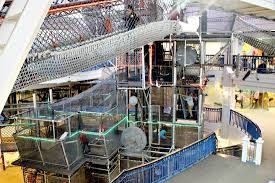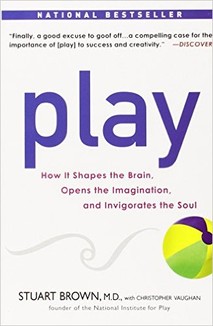Port Discovery Children's Museum
Introduction
Text-to-speech Audio
Images
Interior of the Port Discovery Children's Museum

Play: How it Shapes the Brain, Opens the Imagination, and Invigorates the Soul"

Backstory and Context
Text-to-speech Audio
The Adventure Expeditions exhibit is set during the 1920s in Egypt and takes children on an adventure to find a pharaoh’s lost tomb. Participants go through a series of physical and mental challenges, including deciphering hieroglyphics. The Harvest Hill exhibit sets up a market where children can barter, sell, or trade products. Miss Perception’s Mystery House engages children’s literacy and problem-solving skills by setting up a mystery, the case of the missing Baffeld family, for them to solve.
The museum’s website contains a page, informed by current research, explaining why play is an important part of a child’s life. One reason play is considered by experts to be a crucial part of a child’s development is that it contributes generally to the well being of a child—cognitively, physically, socially, and emotionally. Play is so widely recognized as important that the United Nations High Commission for Human Rights has recognized it as a basic right of every child. For children living in poverty and in violent, war-torn areas this right is quite obviously taken away or, at the very least, limited. However, even children who come from affluent or at least stable backgrounds run the risk of having their play limited, according to an article written by Kenneth R. Ginsburg. He cites the increasingly hurried and high-pressure lifestyles of the modern world as potentially endangering child-driven playtime. Play also offers adults an opportunity to fully engage and bond with their children. In recent times, time allotted for recess in schools has declined significantly. In 1989 a survey by the National Association of Elementary School Principals revealed that 96% of the surveyed schools incorporated at least one recess period into the children’s daily routine. Ten years later, another survey found that only 70% had a recess period. This included even kindergarten classrooms.
